What is Synthetic Fabric: Types, Properties and Uses
The fabrics that are manufactured in factories using chemical synthesis are known as synthetic fabrics. Sometimes, they are also referred to as artificial or man-made fabrics. Synthetics are man-made fabrics that are being created as alternatives to naturally occurring products such as cotton or silk. This simply consists of nylon, polyester, polyvinyl chloride (PVC), and rayon. When it comes to Synthetic fibers, are made by the joining of a link of monomers into polymers, by the process known as polymerization. These fabrics are manufactured by using special manufacturing processes that mix various chemicals made from coal, oil, or natural gas. These particular products are then molded into fibers that are then simply woven into fabric. Here I present What is Synthetic Fabric: Types of Synthetic Fabric, Properties and Uses.
What is Synthetic Fabric?
Synthetic Fabric is made from synthetic yarn, yarn is also made of synthetic fiber. Fabrics are not from natural fiber, coming from all the man-made fibers like Rayon, Polyester, Nylon, spandex, etc. The fiber and yarn are manufactured by different chemical processes.
What are the Different Types of synthetic fabric?
1. Rayon
It is found to be one of the unique fabrics which are made from cellulose, which basically comes from chemically processed cell walls of plants and vegetable fibers. Its application includes in all kinds of clothing and has similar properties to silk. The technology for manufacturing rayon was first invented in the late 1800s, as industry experts looked for cheaper options to natural silk. Rayon has been found as a staple fabric, and these technologies have gradually improved.
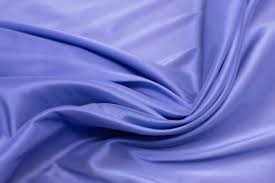
2. Polyester
It is the most well-known and popular of all the synthetics that are available to you as a customer. It is manufactured from a polymer known as polyethylene terephthalate. The special feature of this chemical is its strong and stiff nature, creating fabrics that hold up well to wear and tear. It’s properties include that, it holds their shapes well and is durable. They are easy to wash, which is useful since they can be prone to staining easily. Polyester is particularly highly adaptable and famous in the clothing industry since it resists wrinkling while being soft to wear.
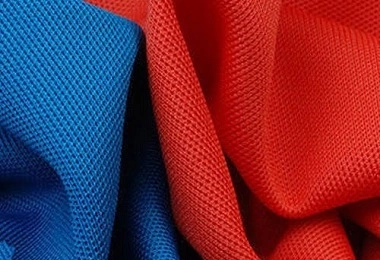
3. Nylon
It is another synthetic that one has definitely used in their day-to-day life. One may find nylon in any of the clothes that have a tendency to repel water since it is excellent at not absorbing liquids. These clothes are very lightweight, and the fabric is strong enough as well as resistant to tears. The special properties include, it is easy to wash and is very quick to dry. It is found to be naturally stretchy but also mixed with various other fibers to provide a good blend that offers better wear and feel. Nylon by itself found as staticky and has a tendency to melt when exposed to high temperatures or flame.
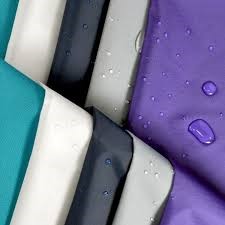
4. Spandex
This fiber is commonly found in clothing because it tends to manufacture elastic, form-fitting outfits that are stretchy and comfortable in nature. It has multiple names, including lycra or elastane, and is basically blended with other kinds of fibers to give them a stretch nature. It is being created using polyester and polyurethane polymers. The special feature of these chemicals is that they allow them to resist moisture, making it correct for sportswear or athletic clothes which won’t absorb sweat as you wear them.
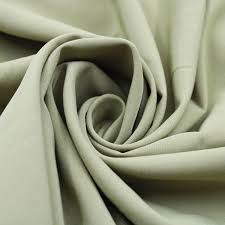
5. Neoprene
It is a waterproof fabric, also known as Scuba Knit Fabric, a synthetic alternative to rubber or other natural products. It is manufactured from polychloroprene, which is stretched into fibers and then woven to manufacture highly stretchy fabrics that retain heat. Because of these properties, neoprene is often used to produce wetsuits, scuba gear, and swimsuits. By using neoprene, these products will always keep you warm while you swim as well as stretch your shape to be form-fitting. Even many of the beachwear contains neoprene.
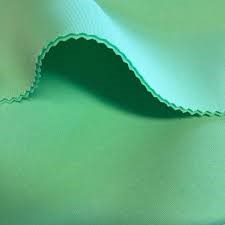
6. Acrylic
It is a petroleum-based synthetic that is majorly used to make fabrics for fashion and apparel. The synthetic material is made from Polymethylmethacrylate (PMMA). Acrylic fibers are simply a kind of polymers made of one key ingredient, acrylonitrile or vinyl cyanide. Acrylic yarn is very famous in knitting as a durable and affordable knitting material for many amateur knitters. When it comes to acrylic commercial production, it began in 1950 when it became common as a wool replacement. Synthetic acrylic fabrics have many advantages and steadily gained a more recognizable market share.
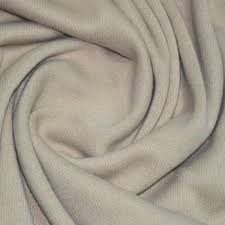
7. Polyurethane
It is an artificial leather which is made of thermoplastic polymer which is being used in the fashion industry. It’s completely synthetic and vegan in nature as well as much cheaper than leather made from animal skins. It is used as an alternative to animal leather. Pure fabrics made of polyurethane are cruelty-free and completely synthetic in nature. They have properties such as being easier to care for, strong, durable, and considered environmentally friendly. They are readily available in more styles, patterns, and colors than leather can.
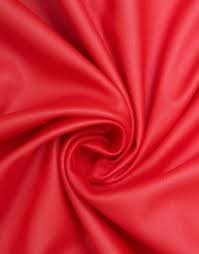
8. Polypropylene
This fabric is a synthetic textile used in many industrial applications, such as the upholstery and apparel industries. It’s also known as PP or polypropylene and can be woven or non-woven. One can also find the application of polypropylene in filters, face masks, and performance textiles. It is strong, soft, lightweight, and easy to clean in nature. Manufacturers generally make polypropylene from various synthetic thermoplastic polymers. Propylene gas has occurred as a by-product of oil and natural gas production.
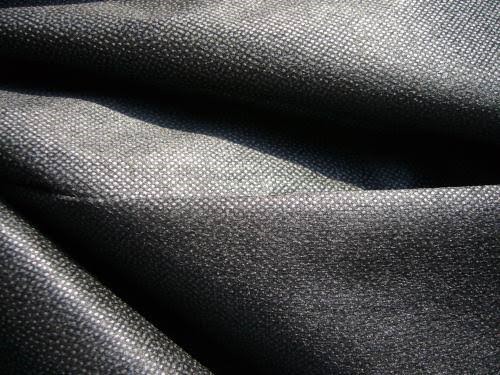
Properties / Characteristics of Synthetic Fabric
Synthetic fabrics have many unique properties that make them very suitable for different applications. Here are the common properties of synthetic fabrics:
1. Chemical composition:
These fabrics have a uniform chemical composition and structure, because of which they possess excellent properties and performance. They are simply being made by extruding the polymer through small holes, which manufactures the fibers. The fibers are then spun into yarn and then simply woven into fabric.
2. Easy care:
These are found to be more often machine washable and quick-drying, which makes them easy to care for. This is a special feature over natural fibers, which often require special washing and care.
3. Durability:
These fabrics are also more durable than any natural fibers, making them very ideal for heavy-duty applications. They possess the property of being resistant to wear and tear as well as can sustain harsh conditions and repeated use.
4. Wrinkle resistance:
These fabrics are mostly resistant to wrinkling, which makes them suitable for use in clothing and home furnishings applications. They possess the property to retain their shape and form, even after multiple washings and wear.
5. Strength
These fabrics are known for their strength, which is usually greater than that of fabrics. This property makes the more suitable for application in products that simply require high strength, e.g., ropes, cords, and other industrial applications.
6. Elasticity
They have a good stretch as well as recovery ability, which makes them preferable for use in elastic clothing and sportswear.
7. Versatility
They are available in a huge range of colors, styles, and textures, which makes them more versatile for use in a variety of applications. Even, it is possible to make them look like natural fibers, such as silk or wool, or to have their own unique texture and appearance.
8. Low cost:
This fabric are generally found to be less expensive to manufacture than natural fibers, which makes them more affordable for consumers. This makes them appropriate for use in applications such as clothing, bedding, and home furnishings.
Uses / Application of Synthetic Fabric
Because of their unique properties and characteristics, these fabrics have a wide range of applications. Here are some of the key applications mentioned below:
1. Textile
Synthetic fabrics are majorly been used in the textile industry due to their excellent properties such as durability, and resistance to wrinkling, staining, and fading. Examples of commonly used synthetic fibers include polyester, nylon, and spandex. These fibers are being utilized for clothing, upholstery, and linens, and are famous due to their low cost and ease of maintenance. Polyester, for instance, is majorly used in the manufacturing of sportswear, outdoor clothing, and casual wear due to its lightweight and quick-drying properties.
2. Industrial Applications:
These are used in various industrial applications because of their strength and durability properties. They are simply used in the manufacture of ropes, cables, and composites, as well as in concrete reinforcement in the construction sector. Aramid fibers, like Kevlar, are used in the manufacture of bulletproof vests as well as other protective clothing, because of the peculiarity of their high strength and resistance to cutting and abrasion.
3. Sports Equipment:
These are used in the sporting industry, including includes manufacturing of tennis rackets, fishing lines, and ski ropes because of their high strength and resistance to stretching. For example, tennis rackets made from synthetic fibers offer improved strength and responsiveness compared with any other natural fibers.
4. Medical Applications:
These fibers are also been utilized in medical textiles, particularly in medical implants, sutures, and wound dressings due to their biocompatibility and non-reactivity with human tissue. Such as, sutures are made from synthetic fibers which offer improved strength and resistance to infection compared with other natural fibers.
5. Automotive Applications:
Synthetic fabrics are also been used in the automotive industry such as seat belts, airbags, and tire reinforcement due to their strength and ability to sustain high stress. For example, seat belts are made from synthetic fibers which provide them improved strength and protection in the event of a collision.
6. Packaging:
It is also been found in the application of packaging materials such as polypropylene bags, because of their durability and resistance to moisture and punctures. For example, food packaging manufactured from synthetic fibers provides enhanced preservation of freshness and protection against contamination.
7. Home Textile:
Synthetic fabrics are used in applications of home décor like carpets, rugs, and curtains because of special features of durability and resistance to staining and fading. For example, carpets that are manufactured with synthetic fibers offer improved durability as well as resistance to wear and tear as compared with those made with natural fibers.
List of various synthetic fabric
- Polyamide
- Polyester
- Acrylic
- Rayon
- Polypropylene
- Elastomeric
- Polyvinyl Alcohol (PVA)
- Polyvinyl Chloride (PVC)
- Polyethylene fibres
- Spandex
- Acetate
- Olefin
- Modacrylic
- Vinyon
- Saran
- Vinalon
- Nomex
- Kevlar
- Twaron
- Modal
- Dyneema/Spectra
- PBI (Polybenzimidazole)
- Sulfar
- Lyocell
- PLA (2002)
- M-5 (PIPD fiber)
- Orlon
- Zylon (PBO fiber)
- Vectran
- Acrylonitrile rubber
- Glass fiber
- Metallic fiber
- Carbon fiber
- Microfiber
- Fleece
Conclusion
Currently, it is clearly evident that synthetic fabric has changed the textile industry, offering a huge range of benefits and applications in all sectors. From polyester to nylon, these man-made fibers have become more adaptable due to their properties of durability, versatility, and affordability. Synthetic fabrics are known for their key features of their resistance to wrinkles, shrinkage, and fading, making them ideal for everyday wear and household items. They also have moisture-wicking properties, which keep one cool and dry during physical activities. Additionally, synthetic fabrics can be engineered to have specific characteristics and properties such as stretch, insulation, or water resistance, making them suitable for various purposes. As with any fabric, it’s crucial to follow care instructions to maintain their quality and longevity. Overall, synthetic fabrics have transformed the textile sector, offering a wide range of options for fashion, sportswear, and home décor.
References
- https://textileengineering.net/types-properties-and-uses-of-synthetic-fibres/
- https://www.panaprium.com/blogs/i/synthetic-fabrics
- https://dresslemuse.com/blog/synthetic-vs-natural-fibers/
- https://silverbobbin.com/synthetic-fabrics-used-in-daily-life/
- https://simple.m.wikipedia.org/wiki/Synthetic_fabric
